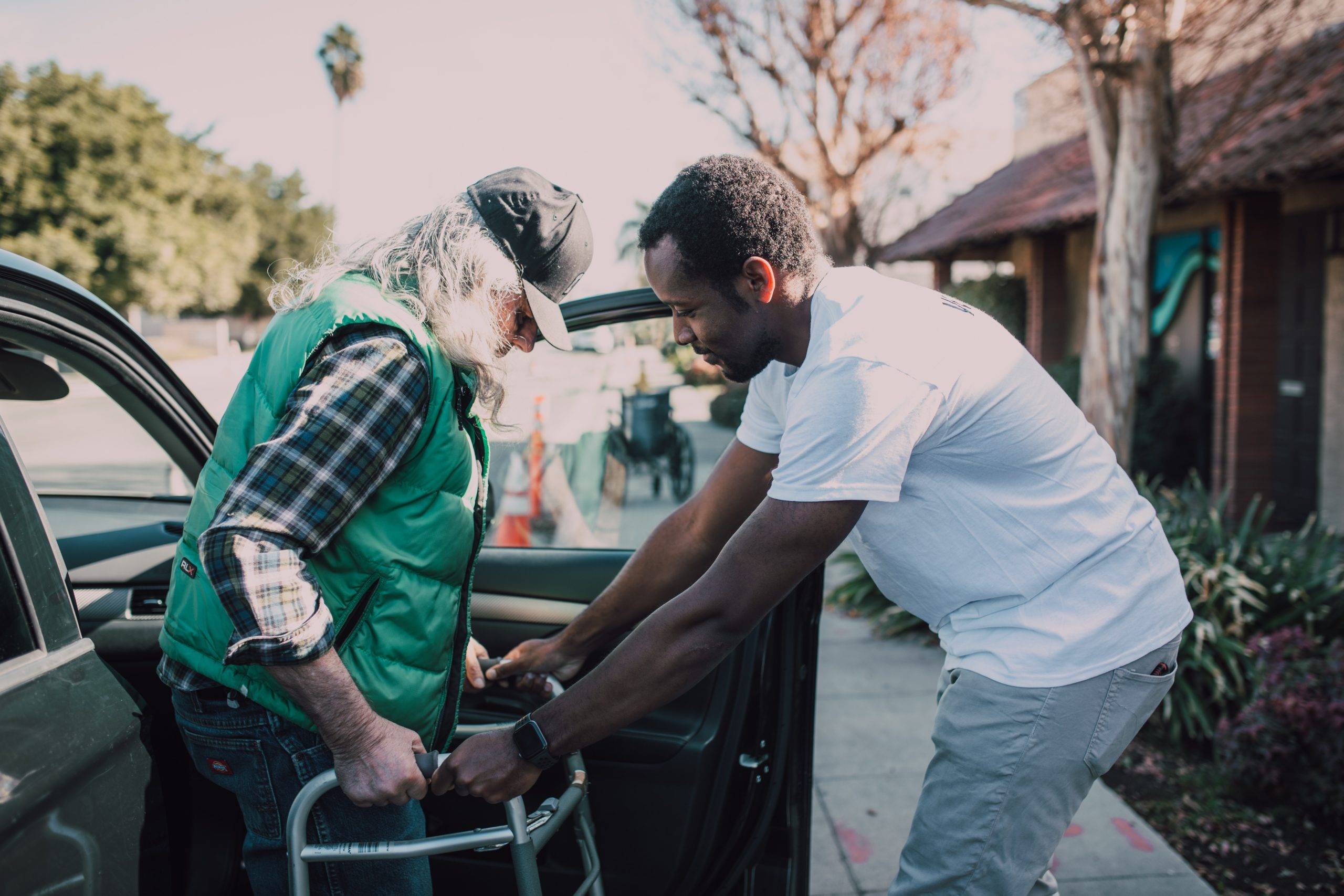Whether the disability was sudden or gradual, one thing is certain–your loved one needs help to maintain independence in their home. As you begin your research into how to become a caregiver, you may feel unprepared, overwhelmed, and alone. It can feel like you’re stepping onto a treacherous mountain that you are completely unprepared to climb. These feelings are very normal. Rest assured in the knowledge that regardless of how it feels, you are not alone. In this article, we will break the process down for you step-by-step and offer a bit of peace of mind. Here are the first five steps for becoming a caregiver for a disabled family member.
What is a Disability?
According to the CDC (Centers for Disease Control and Prevention), around 25% of American adults have a disability that hinders their life in some way. The ratio of those living with a disability naturally increases with age.
There are 6 types of disabilities currently recognized by the CDC:
- Mobility (serious difficulty walking or climbing stairs)
- Cognition (serious difficulty concentrating, remembering, or making decisions)
- Hearing (serious difficulty hearing)
- Vision (serious difficulty seeing)
- Independent living (difficulty doing errands alone)
- Self-care (difficulty dressing or bathing)
(Source)
Caregiving for someone with any disability can be cumbersome. Depending on your situation, you may need to care for someone with multiple disabilities (like cognition and mobility). Next, we’ll explore 5 steps to help you prepare to become a caregiver for a disabled family member.
Step 1: Set the foundation
The first step as a new caregiver is to set the foundation for care. Gather information about your loved one’s daily routines, their current struggles, any changes to their behavior, any symptoms they’re experiencing, etc. This will help you grasp their needs from a high-level perspective.
Step 2: Get the diagnosis
Step two, talk to your disabled family member’s doctor. Take them in for a comprehensive exam and get a formal diagnosis.
Getting the correct diagnosis early is important for a few reasons. First, it’s important to rule out urgent issues (like infections), and second, to determine the best medication or treatment options. Early treatment is always best for your loved one’s long-term independence and quality of life, so if there is any uncertainty, don’t hesitate to get a second opinion.
Step 3: Learn
The next step once you have a diagnosis is to educate yourself and other family members about the diagnosis and prognosis. Talk to other caregivers, talk to doctors and medical care staff, read brochures, gather reputable blog content, read books, watch YouTube videos, and more.
Take the time to understand where your loved one is at now, learn about the disability, and learn about the things you’ll be tasked with. Further, research how your loved one’s condition will change over time. The more you learn, the more confident you will be when it comes time to provide assistance or take on new tasks.
Step 4: Put together a care plan
Once you have assessed your loved one’s personal routines and needs, as well as their disability and prognosis, you can put together a full care plan. The care plan is important for setting goals and staying focused on what’s important. It will help you think through some critical choices like advanced directives, emergency contingency plans, and more.
A care plan is only useful when maintained, so don’t plan to set it and forget it. Instead, plan for regular check-ins on the care plan so you can make adjustments as needed.
We have a full guide on how to put together a care plan linked for you here.
Step 5: Take care of yourself
It can be difficult once you’re in the middle of the daily duties of care to remember to care for yourself. That’s why it’s good to prepare for self-care early. Coordinate schedules to rotate responsibilities with other family members if possible, create a plan for respite care, determine the essential care tasks and separate them from the “nice to have” care tasks so you can prioritize accordingly, etc.
The quality of care you can provide depends on your physical and mental health. Do your best to stay on top of them from the beginning. Prioritize exercise, social interaction, sleep, doctor and dental appointments, and anything else that makes you feel recharged. Showing up in good condition is important so that you can provide the best care possible.
Closing Thoughts: Becoming a Caregiver
Becoming a caregiver can feel frightening, isolating, overwhelming, and fulfilling. The emotional highs and lows of care are tangible, and taking the time to prepare can make all the difference.
The role of caregiver is always tough, but you’re part of a large, strong, and helpful community of people who have been in your shoes. We created the California Caregiver Resource Centers with you both in mind and at heart to be a free resource as you navigate the challenging role you’re in. We would love to connect you with your local Center, which can talk more about local programs and support groups for caregivers, answer your questions, and explain how they can best support you.
Share this post: